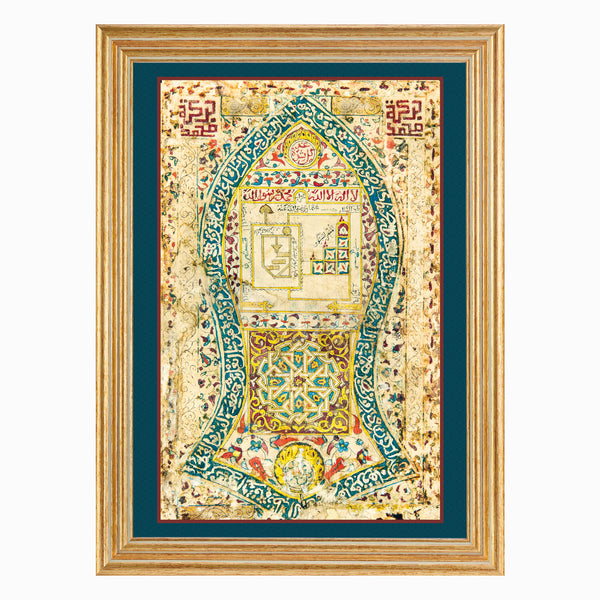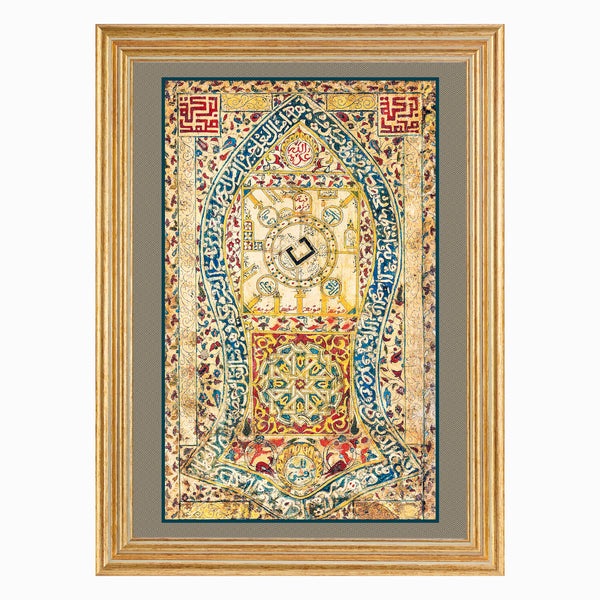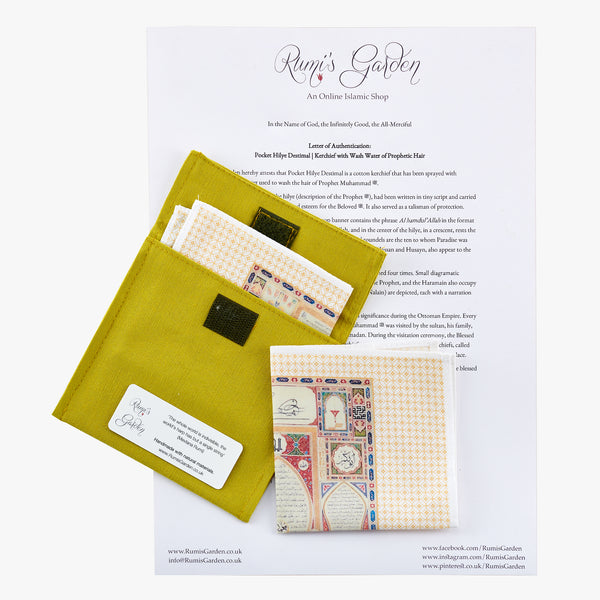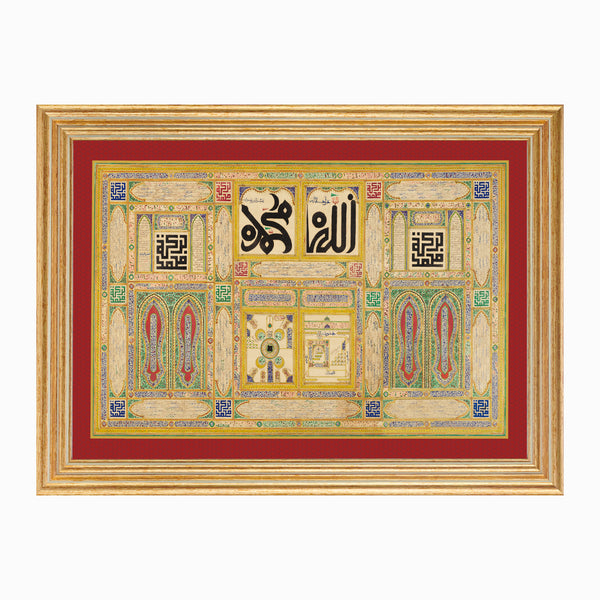Sandal (Nalain) of Prophet Muhammad
Rumi's Garden is honoured to present traditional artwork of the Sacred Sandal (Na'al al-Nabi) of Prophet Muhammad ﷺ.
☾☾☾☾☾
What is the Sacred Sandal (Nalain, Naal, Na'al, Nalayn, Naalayn, Na’layn) of Prophet Muhammad ﷺ?
According to hadith literature, our Beloved Prophet Muhammad ﷺ wore sandals which were suited for the hot sandy desert environment of the Hijaz. The soles of the nalain were composed of tanned leather layers that were stitched together. Furthermore, straps crossed the foot and ankle while two bands passed between the toes to hold his blessed feet in place. The Sacred Sandals is an exceptional feat in craftsmanship. As with all relics belonging to God's Messenger, the Na'al was distributed to his earliest followers such as Umm Kulthum, the child of Abu Bakr al-Siddiq (RAA).
Within Islamic theological literature, there have been numerous descriptions of the sandal including accounts by Dhahabi, Qutb al-Din al-Halabi, and Ibn Hajar.
It can safely be stated that the Sacred Sandal is one of the best-documented relics (tabarukat) of Prophet Muhammad ﷺ that is preserved to this day. The most recognised existing specimen is currently held in the Topkapi Museum in Istanbul. It is kept in a box, lined with green silk, that contains the inscription: "The Sacred Sandals of our Prophet, the master of all the prophets - peace be upon him."
Why has the Sacred Sandal of the Messenger of Allah been depicted throughout Islamic history?
For Muslims, the representation of the Prophetic sandal has always played an important role. Many manuscripts contain depictions of the Naalain and the faithful often kept drawings of it for protection from material and spiritual calamities. Indeed, depictions of the Sacred Sandals have always been considered to be a source of great baraka. As one Arabic poem states:
“The sandals of Prophet Muhammad are over the head of the universe
All the people have been exalted under their shadow
I have served the representation of the Prophet’s sandals
In order to live under his shadow both in this and the next world
Sa’d ibn Mas’ud was in the service of his sandals
And I am happy with the service of the representation of his sandals
Moses was told to take off his sandals at Mount Sinai
However, the Prophet was not allowed to take off his sandals even during Ascension."
The famous scholar of hadith, Ibn Asakir (1287), authored a work entitled Juz Timthal Naal al-Nabi, while al-Maqqari (1040) wrote Fath al-Mutaal fi Madh al Naal. In both these works, much has been said about the benefits of keeping depictions of the Sacred Sandal. Furthermore, patterns of the Naal al-Nabi were kept by legendary Quran recitors Abu Tahir al-Silafi (1180), Muhammad al-Akfani (1129) and Ahmad bin Muhammad bin Yusuf al-Fazari (12th cent.).
Taj al Din Fakihani has stated that if one is unable to see the actual sandal of the Prophet ﷺ, then one should look at its image and kiss it with longing; for in reality, the image is the same at the actual sandal and contains the same benefit. He emphasizes this by stating:
"This has been tried and tested. Hence, the scholars have ordained the same respect for the image as they do for the actual [sandal]."
What are the healing properties of the depictions of the Sacred Sandal of Prophet Muhammad?
Many ulema of the past and present have stated that imagery of the Prophetic sandals brings with it much healing and even miracles.
In one account, Abu Jafar Ahmad bin Abd al-Majid had cut out a pattern of the sandal for his student. Some time passed and his disciple visited his teacher stating that he saw a miracle from this image. His wife had been suffering tremendously from pains that almost took her life. In order to ease her suffering, he placed the image of the Naal on the area of her pain and asked Allah to show him the barakah of the owner of the Sandal. His wife was instantly cured.
Ibn Asakir, in his writings of the sandal image, states that its owner will be protected from oppression and will have victory over enemies. He stresses that it is a talisman (taweez) against the devil and its power wards off jealousy, envy and the evil eye. He also recommends that women, during childbirth, should hold an image of the Naal for it brings with it Allah's strength and power for protection and safety. This ritual still continues in many traditional Islamic societies till today.




